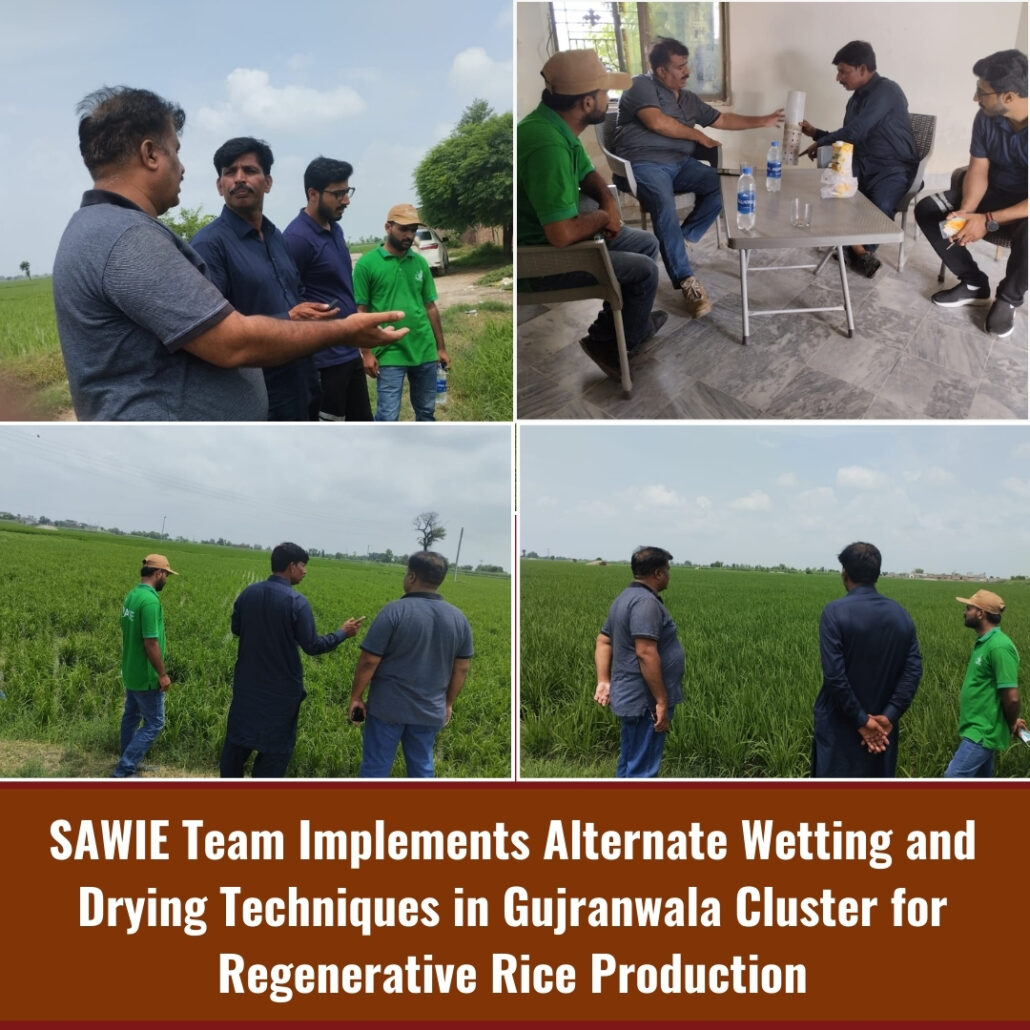

The Alternate Wetting and Drying (AWD) technique is a transformative approach in rice production that significantly contributes to reducing greenhouse gas emissions, particularly methane, while also improving crop yield. By allowing the soil to dry intermittently rather than keeping it continuously flooded, AWD not only conserves water but also enhances root growth and nutrient uptake, leading to healthier, more resilient crops. This method is increasingly being recognized as a key component in sustainable and regenerative agriculture practices.
In line with our commitment to promoting sustainable agriculture, the SAWIE team recently visited rice fields in the Gujranwala Cluster to install the AWD technique at the farmers’ doorstep. Our visit was focused on ensuring that farmers understand the importance and practical application of this technique in their fields.
During the visit, the SAWIE team worked closely with local farmers, providing hands-on guidance on the installation and maintenance of AWD systems. The team also conducted thorough field inspections to assess the current conditions and ensure that the AWD technique was being implemented effectively. This initiative is part of our broader mission to support regenerative rice production practices that not only boost yields but also protect the environment.
By bringing innovative solutions like AWD directly to farmers, the SAWIE team is helping to pave the way for a more sustainable and productive future in rice farming. This initiative is a testament to our ongoing efforts to empower farmers with the tools and knowledge they need to thrive in an increasingly challenging agricultural landscape.